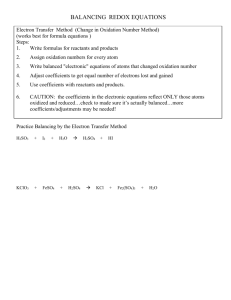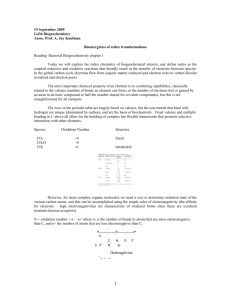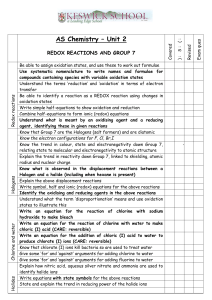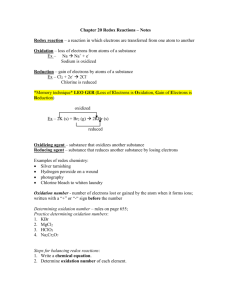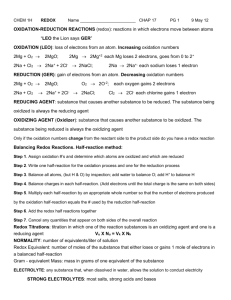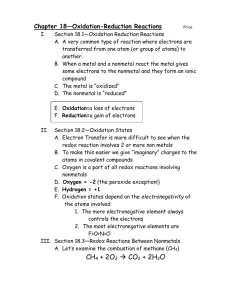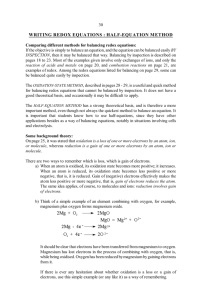Topic 9 – Redox Reactions
advertisement
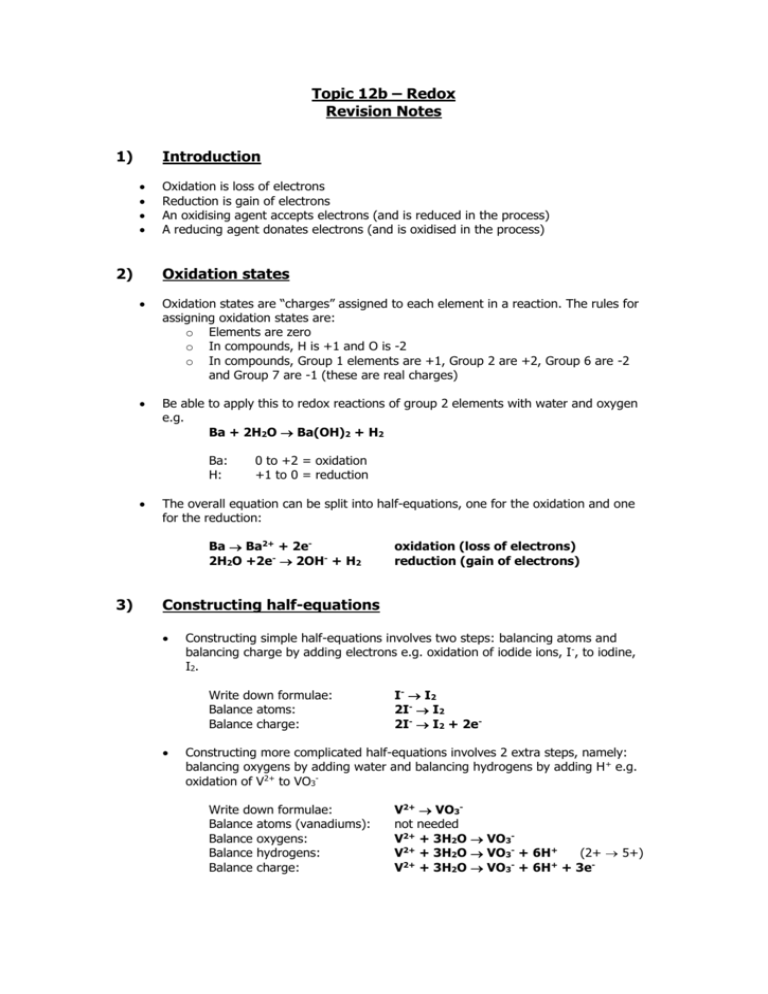
Topic 12b – Redox Revision Notes 1) Introduction 2) Oxidation is loss of electrons Reduction is gain of electrons An oxidising agent accepts electrons (and is reduced in the process) A reducing agent donates electrons (and is oxidised in the process) Oxidation states Oxidation states are “charges” assigned to each element in a reaction. The rules for assigning oxidation states are: o Elements are zero o In compounds, H is +1 and O is -2 o In compounds, Group 1 elements are +1, Group 2 are +2, Group 6 are -2 and Group 7 are -1 (these are real charges) Be able to apply this to redox reactions of group 2 elements with water and oxygen e.g. Ba + 2H2O Ba(OH)2 + H2 Ba: H: 0 to +2 = oxidation +1 to 0 = reduction The overall equation can be split into half-equations, one for the oxidation and one for the reduction: Ba Ba2+ + 2e2H2O +2e- 2OH- + H2 3) oxidation (loss of electrons) reduction (gain of electrons) Constructing half-equations Constructing simple half-equations involves two steps: balancing atoms and balancing charge by adding electrons e.g. oxidation of iodide ions, I-, to iodine, I2. Write down formulae: Balance atoms: Balance charge: I- I2 2I- I2 2I- I2 + 2e- Constructing more complicated half-equations involves 2 extra steps, namely: balancing oxygens by adding water and balancing hydrogens by adding H + e.g. oxidation of V2+ to VO3Write down formulae: Balance atoms (vanadiums): Balance oxygens: Balance hydrogens: Balance charge: V2+ VO3not needed V2+ + 3H2O VO3V2+ + 3H2O VO3- + 6H+ (2+ 5+) V2+ + 3H2O VO3- + 6H+ + 3e- 4) Redox equations To produce an overall redox equation, multiply one or both half-equations until the number of electrons is the same Fe2+(aq) Fe3+(aq) + eMnO4-(aq) + 8H+(aq) + 5e- Mn2+(aq) + 4H2O(l) In this case, multiply the first half-equation by 5 to get 5 electrons in both. 5Fe2+(aq) 5Fe3+(aq) + 5e- Now add the half-equations together, cancelling the electrons at the same time. 5Fe2+(aq) + MnO4-(aq) + 8H+(aq) 5Fe3+(aq) + Mn2+(aq) + 4H2O(l) Any species that appears on both sides of the equation needs to be cancelled e.g. H+



